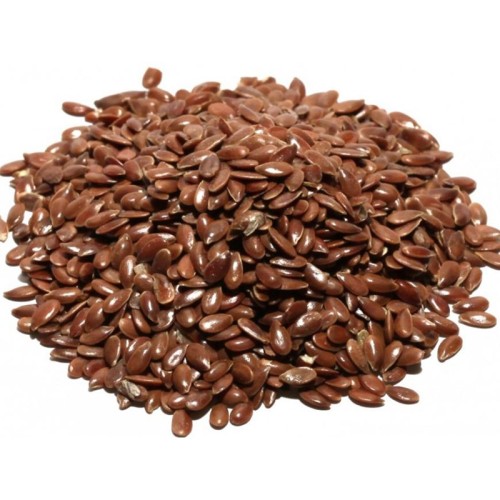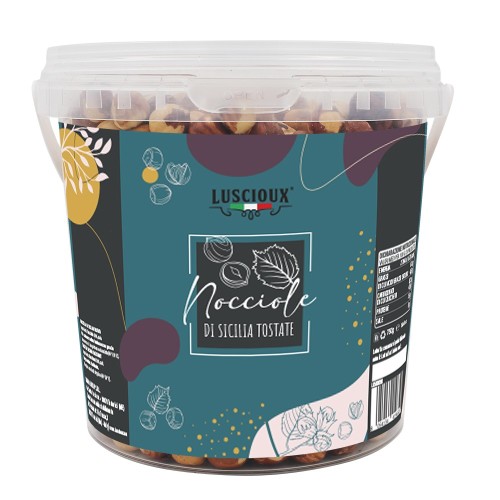Sunflower seeds
(€3.17 Per Kg)
 Security policy
Security policy
Transparency and reliability - Encrypted information (SSL Certificate)
 Delivery policy
Delivery policy
Fast shipping with delivery in 1- 4 working days.
 Return policy
Return policy
24/7
Sunflower seeds are plant-based foods rich in (unsaturated) fats and therefore calories. They do not have a typical culinary use in Italian cuisine and are mostly used as an "alternative" snack or to enrich raw salads and "rustic" breads, such as cereals.
Specific References
- ean13
- 8054134416666
Nutritional values
| Ingredients | Sunflower seeds. May contain traces of PEANUTS and NUTS. |
| Method of conservation | Keep in a cold and dry place. |
| Nutrition declaration | average values per 100 g: |
| Power | 2774 kJ / 673 kcal |
| Fats | 63 g |
| of which saturated fatty acids | 6.5g |
| Carbohydrates | 2.4g |
| of which sugars | 2.2g |
| Fibers | 12 g |
| Protein | 18 g |
| Salt | 0 g |
| Phosphorus | 585 mg (84% NRV*) |
| Copper | 3.1 mg (310% NRV*) |
| Manganese | 2.6 mg (130% NRV*) |
| Source | Euro Company analysis |
| Directions | The advice given IS NOT IN ANY WAY TO BE CONSIDERED OF MEDICAL/PRESCRIPTIVE VALUE. The information provided is for informational and informative purposes only, therefore they are not intended in any way to replace medical advice. In the presence of pathologies you should always consult your doctor. |
| Origin | Eastern Europe: Bulgaria / Ukraine / Hungary / Moldova, Austria |
| Nutrients | Phosphorus, Manganese, Copper |
| Vnr | *Nutritional Reference Value |
| Label and packaging | The images are included for illustrative purposes, the product may undergo changes based on stock availability and the selected weight. |
Curiosity
The common sunflower ( Helianthusannuus ) is an annual plant native to the Americas, belonging to the Asteraceae family, with a large flower head inflorescence.
The stem it can normally reach 2 meters in height (in the countries of origin it can reach and exceed 3 – 4 meters 1 ). The leaves are large, largely ovate or even triangular in shape, heart-shaped at the base and with a sharp apex. The margins are serrated and the surface is rough and crossed by three nerves.
What is called the flower it is actually the flower head (called inflorescence in general), composed of a set of numerous flowers. There are two types of flowers: the external ones, called " petal flowers " (from 17 to 30), ligulate which can be Detective stories or possibly brown, orange or other colors and are arranged in a single rank; and the internal ones, called "disc florets" (about 150 or more), which are tubular, dark orange-brown in colour. Flowering occurs from July to October.
Most of the flower heads present in a field of sunflowers flowery points to the east, where the sun rises . Unripened sunflower buds already show this heliotropism: on sunny days they follow the path of the sun in the sky from east to west, while at night and at dusk they turn east again. The movement originates from the motor cells positioned under the bud and is due to a hormonal mechanism. When the sunflower flowers, the stem freezes in an easterly direction. Because of this, flowering sunflowers are no longer heliotropic, even though most of the flowers point in the direction the sun rises.
When i Disc flowers ripen into seeds , however what is commonly called a seed is actually the fruit (achene) of the plant. The shape of the achenes ranges from oval to oblong, with a velvety surface and a variable color from black to light grey.
THE sunflower seeds they are sold as snacks self toasted , especially in China , United States and Europe . In kitchen they can be used for salads or to flavor the bread . An oil is extracted from it industrially. Still today there are varieties with a high oleic acid content that do not differ too much from the composition of olive oil.
The seeds are also employed as feed for birds And rodents . Motor oil used to make biodiesel can also be extracted from it, which is cheaper than other fuels. The residues of the pressing are used as feed for livestock. Sunflowers produce latex, which is being tested to use them as an alternative source of hypoallergenic rubber. The leaves can be used in livestock nutrition, while the stem contains fibers that can be used in paper production.
The sunflower is the state flower of Kansas (USA) and one of the flower symbols of the city of Kitakyushu (Japan).
1 Motta, vol. 2 – p. 411
Sources:
History
The name of the genus ( Helianthus ) comes from two Greek words ”helios” (= sun) and ”anthos” (= flower) referring to the tendency of this plant to always turn its head towards the sun. The specific name ( annuus ) indicates the type of biological cycle (annual).
The scientific duo currently accepted ( Helianthusannuus ) was proposed by Linnaeus (1707 – 1778), Swedish biologist and writer, in the publication Species Plantarum of 1753.
The sunflower is native to Americas where it was cultivated from at least 2600 BC. Francisco Pizarro discovered that the Incas considered the sunflower to be the image of their sun god. At the beginning of the 16th century both gold reproductions of the flower and seeds of the flower were brought to Europe.
In Greek mythology it is said that a nymph named Clizia fell in love with the sun god Apollo and did nothing but watch his chariot fly in the sky. Nine days later she was transformed into a sunflower. For this reason the word sunflower already existed long before the "Heliantusannuus" was brought to Europe and it is clear that the aforementioned myth (mentioned in Ovid's Metamorphoses) refers more properly to heliotrope, a different plant.
Vincent Van Gogh immortalized the sunflower in some splendid paintings in 1888.
The botanist Jacobus Antonius Cortusus (died 1593) described to his friend Pietro Andrea Mattioli (1500 – 1577), physician and botanist from Siena, a specimen 120 spans tall (about 4 meters). Other sources report that in 1567 a 12 m tall sunflower grew in Padua. The seeds of identical provenance generated other specimens that grew up to 8 m in height in other places (eg Madrid) and periods. More recently specimens over 8 m tall have been obtained both in Holland and in Canada (Ontario).
The American Indians have used sunflower for multiple uses in the past: such as in the preparation of bread, in medical ointments, dyes and body paints 1 .
Some parts of this flower contain the glucoside of quercetin (quercimerithrin), some amino bases, calcium salts of solanic acid and a xanthophyll 2, 3 .
A research conducted by Peking University has found that sunflower sprouts possess an active agent, cynarin, which intervenes against glycoxidation, a phenomenon linked to diabetes. Also a strong capacity was observed antioxidant in terms of removing free radicals and reducing properties. The results suggest that the consumption of sunflower sprouts may be a beneficial choice for those suffering from type 4 diabetes .
THE sunflower seeds they are rich in compounds phenolics 5 .
A 2009 study showed a high antioxidant capacity of the aqueous extract obtained from sunflower seeds, suggesting that the consumption of these seeds can prevent the oxidative reactions responsible for the development of many ailments 6 .
1 Pelczar, Rita. (1993) The Prodigal Sunflower. American Horticulturist 72(8).
2 Motta, vol. 2 – p. 411
3 Plants For A Future. http://www.pfaf.org/user/Plant.aspx?LatinName=Helianthus annuus
4 Sun Z, Chen J, Ma J, Jiang Y, Wang M, Ren G, Chen F. Cynarin -rich sunflower (Helianthusannuus) sproutspossessbothantiglycative and antioxidantactivities . Journal of Agricultural and Food Chemistry [2012, 60(12):3260-3265]
5 Pająk P, Socha R, Gałkowska D, Rożnowski J, Fortuna T. Phenolic profile and antioxidant activity in selected seeds and sprouts. Food Chemistry [2014, 143:300-306]
6 Giada MD, Mancini-Filho J. Antioxidantcapacity of the stripedsunflower (Helianthusannuus L.) seedextractsevaluated by three in vitro methods. International Journal of Food Sciences and Nutrition [2009, 60(5):395-401]
Sources :
https://it.wikipedia.org/wiki/Helianthus_annuus
https://en.wikipedia.org/wiki/Sunflower
https://www.greenme.it/mangiare/altri-alimenti/10337-semi-di-girasole-proprieta-benefici-usi
storage
You can store sunflower seeds in cool, dry places away from sources of heat and humidity. Here are 4 useful tips:
- The ideal condition for keeping sunflower seeds is in a refrigerated environment. Sunflower seeds can also be stored without problems at room temperature during the winter season given the low temperatures. During the summer, on the other hand, it is advisable to keep it in the fridge or in the coolest possible place, as the increase in temperatures could favor the deterioration of the products.
- The ideal container in which to store sunflower seeds is glass. In fact, thanks to its constitution it is impenetrable to chemical and gaseous agents, and having excellent thermal insulating capacity it maintains the initial temperature for a longer time compared to other materials. If the glass is colored, so much the better: using colored glass prevents the entry of some wavelengths of light (including ultraviolet light) and therefore some nutritional and organoleptic characteristics remain unaltered.
- The type of closure of the container is also important: an airtight cap ensures that the food is protected from excessive contact with oxygen which can lead to lipid oxidation and which can be essential for aerobic bacteria.
- The environment should always be well ventilated: by ventilating the rooms, the internal humidity that escapes from the window is kept under control, guaranteeing the right balance, which helps to discourage the onset of mould.
Recommended doses
30 g of sunflower seeds provide:
- 92% of the nutritional reference value of copper;
- 39% of the nutritional reference value of Manganese;
- 25% of the nutritional reference value of Phosphorus.
Individual needs vary according to age, gender, weight and physical activity. A varied and balanced diet and a healthy lifestyle are the basis of your well-being.
Property
100g of sunflower seeds contain:
- Calcium (122 mg - 15% NRV)
- Niacin (3.7mg - 23% NRV)
- Selenium (15 μg - 27% NRV)
- Potassium (627 mg - 31% NRV)
- Iron (4.5 mg - 32% NRV)
- Zinc (4.8 mg - 48% NRV)
- Vitamin B6 (0.87 mg - 62% NRV)
- Magnesium (266 mg - 71% NRV)
- Phosphorus (585 mg - 84% NRV)
- Manganese (2.6mg - 130% NRV)
- Copper (3.1 mg - 310% NRV)
- Vitamin E (58mg - 483% NRV)
- Fiber (12g)
No customer reviews for the moment.





